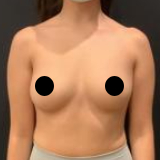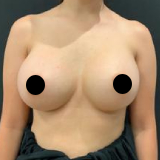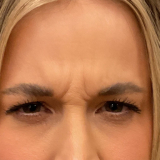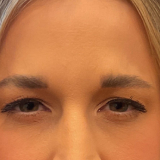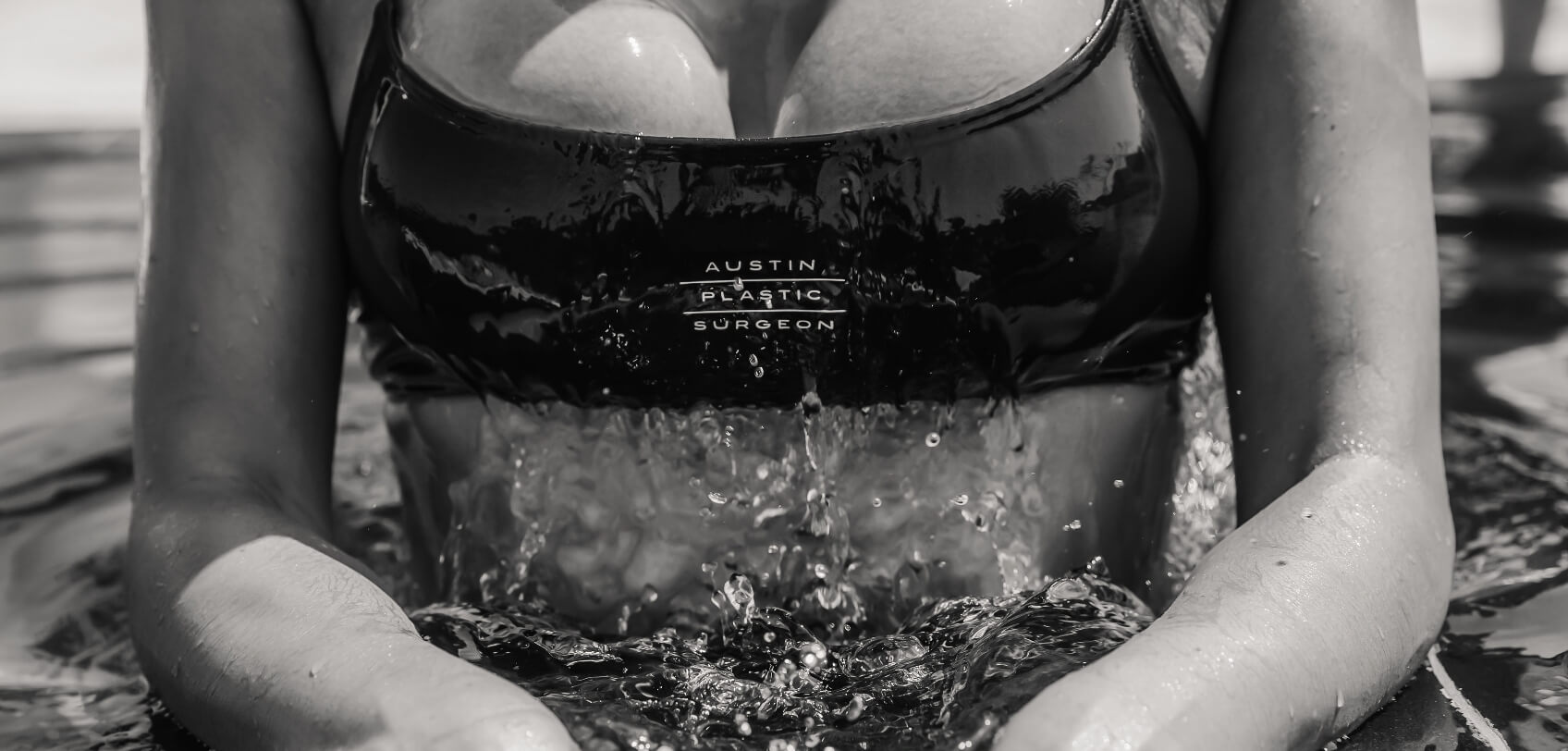Fat Transfer to the Breast
Consultations offered at our three convenient locations in Austin, TX, San Antonio, TX and Westlake Hills, TX

Breast fat transfer is a procedure that provides patients with improvements in breast size and shape using their own natural body fat. (1) Plastic surgeons can extract this fat from elsewhere in the body using liposuction – usually places that have excess fat deposits of their own. Oftentimes, these areas can include the thighs, abdomen, arms, or back. They then process and purify the fat for reinjection into the breasts for a natural-looking increase in volume. This fat transfer can be done as a fat only breast enhancement or in combination with a breast lift, or breast augmentation.
At Austin Plastic Surgeon, our dedicated team is highly experienced in breast augmentation, including fat transfers to the breasts. If you are looking for a more natural alternative to breast implants, and want to reshape or resize your breasts, give us a call at the location that is most convenient for you:
If you would prefer, you can also fill out our contact form as an alternative to calling.
Contents
About Fat Transfer to the Breast
The breasts consist of glandular tissue and adipose (fat) tissue. Factors such as aging, weight fluctuations, “Ozempic breast”, and hormonal changes can lead to a decrease in breast volume. Breast fat transfer aims to counteract these changes by adding volume without using synthetic materials. This option provides a more natural aesthetic due to the use of the patient’s own fat.
Fat Transfer and Implants
While we can use fat transfer on its own to enhance the size and shape of the breast, we can also use it alongside implants to help conceal the implant from view, or enhance the shape of the breast such as increasing cleavage. Sometimes, if a patient’s skin is thin, the implant can be more apparent which increases the risk of rippling. Fat transfers can help provide a cushion of extra volume around the implant in the breast pocket so that patients do not have to worry about the visibility of their implant. (1) The fat transfer in combination with a breast implant can create a natural, enhanced appearance to the breast.
Alternatives to Implants
Because fat transfer procedures use a patient’s own fat, it is already a more natural alternative to synthetic implants. Sometimes, if a patient decides they no longer want an implant, or want to stay away from implants for their augmentation, a fat grafting procedure can be done instead to achieve similar results. (1) As another non-implant-based alternative, the Austin Plastic Surgeon team offers alloClae, the first large-volume non-autologous injectable fat available in the United States. AlloClae can be used to pre-expand a breast so that patients can achieve a better result from their breast fat grafting procedure, or after an enhancement for fine tuning the results of your breast enhancement. If you do not want implants or want to replace your current implants with natural fat tissue, our team at Austin Plastic Surgeon can help you achieve elegant results.
Benefits
Patients who undergo a fat transfer to the breasts often enjoy the following benefits:
- Natural-Looking Results: Since fat from your own body is used, the outcome blends seamlessly with existing breast tissue.
- No Risk of Rejection: Since the injected material is your own fat, there is minimal risk of allergic reactions or rejection.
- Dual Body Contouring: The procedure allows for body contouring where excess fat is removed from the donor site, creating a more sculpted silhouette.
- Minimally Invasive: Unlike traditional implants, the incisions made during fat extraction and injection are typically smaller and result in less scarring.
- Low Maintenance: Unlike implants, transferred fat can improve over time as the tissues integrate better into the surrounding area.
- Improved Confidence: Enhanced breast volume can lead to a boost in self-esteem and satisfaction with one’s appearance.
- Customization: The procedure can be tailored according to the patient’s desired volume and shape.
While many of these benefits are similar to those of breast augmentation with implants, fat transfers have the added benefit in the way that the fat can be placed in various layers of the breast tissue. (2) This may allow for more exactness or customization for breast size and shape, as well as making for more natural results for patients who desire them.
Candidates
If you are looking to enhance your breast size or shape, a fat transfer procedure could be right for you. Candidates must have sufficient fat deposits elsewhere in their bodies for fat transfer liposuction to be successful. They should have a healthy outlook on body contouring procedures, as well as be in good general physical health. If you are not completely sure if you qualify as a candidate for a fat transfer to the breast, the team at Austin Plastic Surgeon will evaluate you and your characteristics to determine the most effective treatment plan for you.
Personal Consultation
During your personal consultation at Austin Plastic Surgeon, you will receive exceptional care and attention from our team from day one. We will make sure that you are well informed about the process. We want to make sure that you achieve the results you are looking for, so please do not hesitate to share any goals or concerns that you may have regarding a fat transfer procedure. When designing your treatment plan, your plastic surgeon will take into account your current health status and any previous medical conditions you have had as well. If you and your plastic surgeon decide that a fat transfer to the breast would be a good fit for you, they will move forward with appointment planning and further preparatory instructions.
To schedule this important meeting, fill out our contact form and we will get back to you about your appointment shortly.
Preparation
To prepare for your fat transfer procedure, you will need to follow specific instructions. These may include guidelines such as:
- Ceasing smoking and nicotine consumption: You should stop smoking or ingesting nicotine a few weeks before your fat transfer to optimize your recovery.
- Arranging a ride home from the surgery: Contact someone you trust and ask them if they can provide you with transportation home from your procedure.
- Planning to take some time off of work: You will need adequate time to rest after your fat transfer–usually about 2 weeks of avoiding any undue exertion.
- Adjusting or avoiding certain medications as recommended: You will have to avoid taking medications or supplements that have blood-thinning properties.
Procedure
Depending on the patient’s goals and the condition of the breast tissue, each fat transfer procedure will vary in its exact details. The surgery typically follows these steps:
- Liposuction: Under local or general anesthesia, small incisions are made at designated donor sites. A thin cannula is then inserted to gently suction out the unwanted fat. At Austin Plastic Surgeon we take enormous pride in our liposuction and sculpting of the body. This has been the huge benefit of fat transfer to the breast as it can result in a total body transformation.
- Preparation of Fat: The collected fat is processed to separate viable fat cells, ensuring only healthy adipose tissue is used for transfer. We typically use a system called Viality that allows for precision processing to enhance the overall fat take rate for patients. In the clinical studies patients that had fat transfer to the breast using Viality had fat survival in the 70 – 80% range which has made the results of fat transfer to the breast much more predictable and reliable!
- Injection into Breasts: After preparing the fat, the surgeon creates tiny entry points in the breast tissue for injection. The fat is strategically layered into different parts of the breast to create the desired shape and fullness.
- Closure: Once the injections are complete, the small incisions are closed, usually requiring no stitches or very minimal ones.
The duration of the procedure is generally about two to three hours, depending on the extent of the liposculpting and transfer.
Recovery
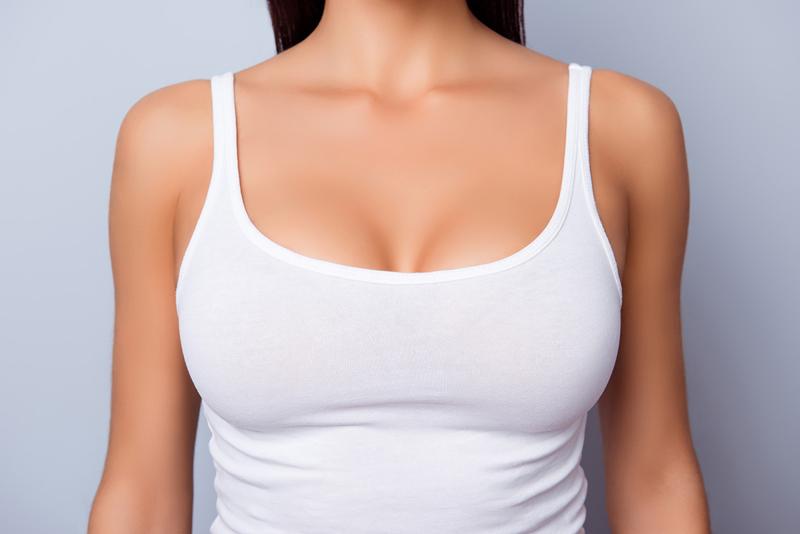
It is important to keep in mind that any fat transfer procedure will require two different recovery sites–the site where the fat was taken from, and the site where the fat was reinjected. These healing processes will take place at the same time, making for one recovery period despite there being two different sites.
It is normal to experience bruising, swelling, or tenderness in the treated areas, which will subside with time. Recovery from this kind of procedure usually takes around 2 weeks. During this time, you should refrain from engaging in any strenuous activities such as high-impact exercise or heavy lifting. After this period, you can gradually begin to lightly exercise, but you should continue to refrain from more strenuous activities until you are more fully healed, or until your surgeon says it is okay to do so. We will help you set up a follow-up appointment so we can check on the progress of your recovery and ensure that you are healing well.
Results
The results of fat transfer to the breasts will be more fully apparent after bruising and swelling subsides and chest tissues settle into their final position. It is important to keep in mind that some percentage of fat will be lost during any fat transfer, as some fat is inevitably absorbed by the body. However, end results are substantial, with patients noticing improved breast volume and up to 80% of volume retention with the use of precision processing techniques such as Viality. (1) After this procedure, patients may feel more confident wearing certain kinds of clothes, as the breasts will have more natural support and appear more youthful.
Cost of Fat Transfer to the Breast Augmentation in Austin
The cost of fat transfer procedures depends on the patient’s specific goals. Our team at Austin Plastic Surgeon will need to evaluate your current situation to determine a cost that is relevant to your needs. To arrange this personal consultation, please call one of our office locations.
You may also fill out our contact form.
FAQ
Which is better; breast implants or fat transfer?
The type of procedure best for each patient can differ depending on their goals. If patients would like to achieve a considerably larger breast size, then breast implants may be the better option. However, if patients are looking for a more modest increase in size and more natural-looking results, a fat transfer procedure may be the right path.
How much fat is needed for fat transfer to the breasts?
The amount of fat required varies for each individual. Generally, patients wishing to achieve a modest increase can address this with approx 300-500 cc of fat per breast. Patients who want a more significant increase in breast size will need multiple rounds of fat transfer or a combination of fat transfer and implants.
Can I get fat transferred to the breasts if I am very slim?
Candidates should have sufficient amounts of excess fat available for harvesting from other body parts. However, fat from non-autologous sources such as alloClae (acellular adipose tissue) may be beneficial for very slim patients.
How long do results from a breast fat transfer last?
Results from fat transfer to the breast are essentially permanent–unlike implants, which need to be replaced after a period of time.
References
- Turner A, Abu-Ghname A, Davis MJ, Winocour SJ, Hanson SE, Chu CK. Fat Grafting in Breast Reconstruction. Seminars in Plastic Surgery. 2020;34(01):017-023. doi:https://doi.org/10.1055/s-0039-1700959
- Nahabedian MY. Large-Volume Autologous Fat Grafting to the Breast. Aesthetic Surgery Journal. 2021;41(Supplement_1):S16-S24. doi:https://doi.org/10.1093/asj/sjaa426
